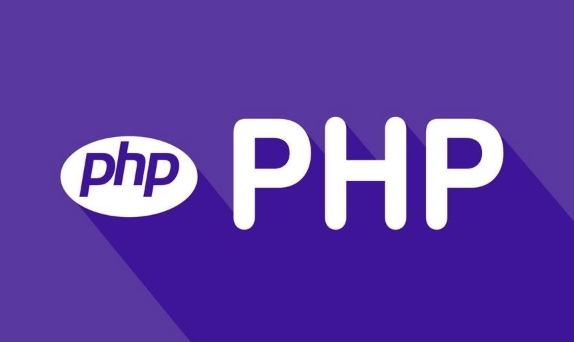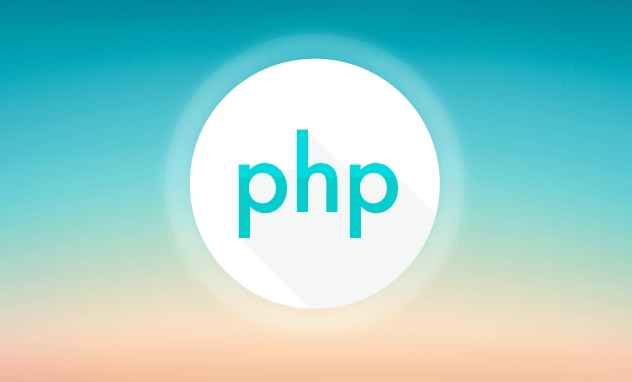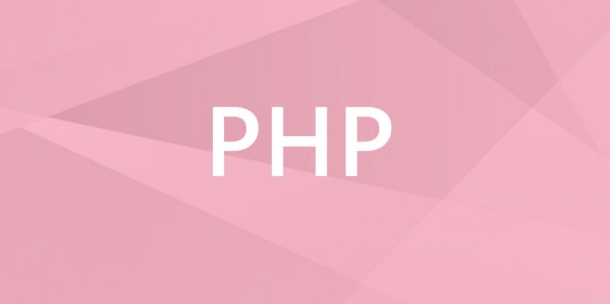How to build RESTful APIs using PHP frameworks?
Jul 10, 2025 pm 01:46 PMCommon PHP frameworks for building RESTful APIs include Laravel, Lumen, and Slim. 1. Choose a framework based on the project size. For example, Laravel is suitable for medium and large projects, Lumen is a lightweight and high-performance framework, and Slim is more suitable for small projects. 2. Define a routing structure that conforms to resource semantics, such as GET /users to obtain all users, and GET /users/1 to obtain the specified user. 3. Use the controller to process the logic to keep the code neat and define the route through Route::apiResource or manual registration. 4. Unifiedly return the JSON response format, including status code, message and data body, and improve interface consistency. 5. Add authentication such as JWT or Laravel Sanctum to ensure API security. 6. Handle exception errors globally to avoid directly exposing the original error information to the client, thereby improving the robustness of the system and user experience.

Of course, building RESTful APIs is a very common requirement in modern web development. As an old backend language, PHP has many mature frameworks to help you complete this task efficiently. Below are some common PHP frameworks and specific operation suggestions.

1. Select the right PHP framework
Currently mainstream PHP frameworks such as Laravel, Slim and Lumen are very suitable for developing RESTful APIs.
- Laravel has comprehensive functions and is suitable for medium and large projects. It comes with Eloquent ORM, routing, middleware, etc.
- Lumen is a micro-frame version of Laravel, lightweight but still powerful, suitable for high-performance API scenarios.
- Slim is lighter and more flexible, suitable for small projects or scenarios with high performance requirements.
You can choose the most appropriate framework based on project size and technology stack.

2. Define a clear routing structure
One of the core of the RESTful API is that URL design must comply with the principle of resource semantics. For example:
GET /users -> Get all users GET /users/1 -> Get POST /users with ID 1 -> Create new user PUT /users/1 -> Update user information DELETE /users/1 -> Delete user
In Laravel, you can use Route::resource() to quickly define resource routing. In Slim or Lumen, you need to manually register each HTTP method and path.

3. Use the controller to process the logic and keep the code clean
Put the business logic of the API into the controller instead of writing it directly into the router, which makes it easier to maintain and test.
Take Laravel as an example:
// routes/api.php
Route::apiResource('users', UserController::class);
// app/Http/Controllers/UserController.php
public function index()
{
return User::all();
}
public function show($id)
{
return User::find($id);
}This method separates the request from the processing logic and facilitates subsequent expansion.
4. Returns a unified format JSON response
A good API should return consistent data structures. Typically, status codes, messages and data bodies are included. for example:
{
"status": "success",
"message": "User retrieved successfully",
"data": {
"id": 1,
"name": "John Doe"
}
}Or error response:
{
"status": "error",
"message": "User not found"
} In Laravel, you can unify the output format by encapsulating Response class or using middleware.
5. Add authentication and permission control
API security is important, especially for externally exposed interfaces. Laravel provides authentication mechanisms such as Sanctum and Passport, while Lumen and Slim can be implemented through JWT (JSON Web Token) and other methods.
The basic process is:
- User login to get token
- Take token with subsequent requests
- The server verifies the token and identifies the user
- Determine whether you have permission to access specific resources based on the role
6. Handle errors and exceptions
Do not let uncaught exceptions be returned directly to the client. You can set up a global exception handler in the framework to intercept database errors, resource failure, etc., and return friendly prompt information.
In Laravel, you can modify the App/Exceptions/Handler.php file to customize exception handling logic.
Basically that's it. Although the specific implementation methods of different frameworks are slightly different, the overall ideas are the same: design good routing, organize logic, unify response formats, and ensure security and maintainability.
The above is the detailed content of How to build RESTful APIs using PHP frameworks?. For more information, please follow other related articles on the PHP Chinese website!

Hot AI Tools

Undress AI Tool
Undress images for free

Undresser.AI Undress
AI-powered app for creating realistic nude photos

AI Clothes Remover
Online AI tool for removing clothes from photos.

Clothoff.io
AI clothes remover

Video Face Swap
Swap faces in any video effortlessly with our completely free AI face swap tool!

Hot Article

Hot Tools

Notepad++7.3.1
Easy-to-use and free code editor

SublimeText3 Chinese version
Chinese version, very easy to use

Zend Studio 13.0.1
Powerful PHP integrated development environment

Dreamweaver CS6
Visual web development tools

SublimeText3 Mac version
God-level code editing software (SublimeText3)

Hot Topics
 Comparison of the advantages and disadvantages of PHP frameworks: Which one is better?
Jun 04, 2024 pm 03:36 PM
Comparison of the advantages and disadvantages of PHP frameworks: Which one is better?
Jun 04, 2024 pm 03:36 PM
The choice of PHP framework depends on project needs and developer skills: Laravel: rich in features and active community, but has a steep learning curve and high performance overhead. CodeIgniter: lightweight and easy to extend, but has limited functionality and less documentation. Symfony: Modular, strong community, but complex, performance issues. ZendFramework: enterprise-grade, stable and reliable, but bulky and expensive to license. Slim: micro-framework, fast, but with limited functionality and a steep learning curve.
 Performance differences of PHP frameworks in different development environments
Jun 05, 2024 pm 08:57 PM
Performance differences of PHP frameworks in different development environments
Jun 05, 2024 pm 08:57 PM
There are differences in the performance of PHP frameworks in different development environments. Development environments (such as local Apache servers) suffer from lower framework performance due to factors such as lower local server performance and debugging tools. In contrast, a production environment (such as a fully functional production server) with more powerful servers and optimized configurations allows the framework to perform significantly better.
 PHP Frameworks and Microservices: Cloud Native Deployment and Containerization
Jun 04, 2024 pm 12:48 PM
PHP Frameworks and Microservices: Cloud Native Deployment and Containerization
Jun 04, 2024 pm 12:48 PM
Benefits of combining PHP framework with microservices: Scalability: Easily extend the application, add new features or handle more load. Flexibility: Microservices are deployed and maintained independently, making it easier to make changes and updates. High availability: The failure of one microservice does not affect other parts, ensuring higher availability. Practical case: Deploying microservices using Laravel and Kubernetes Steps: Create a Laravel project. Define microservice controllers. Create Dockerfile. Create a Kubernetes manifest. Deploy microservices. Test microservices.
 Integration of PHP frameworks with DevOps: the future of automation and agility
Jun 05, 2024 pm 09:18 PM
Integration of PHP frameworks with DevOps: the future of automation and agility
Jun 05, 2024 pm 09:18 PM
Integrating PHP frameworks with DevOps can improve efficiency and agility: automate tedious tasks, free up personnel to focus on strategic tasks, shorten release cycles, accelerate time to market, improve code quality, reduce errors, enhance cross-functional team collaboration, and break down development and operations silos
 Which PHP framework offers the most comprehensive extension library for rapid development?
Jun 04, 2024 am 10:45 AM
Which PHP framework offers the most comprehensive extension library for rapid development?
Jun 04, 2024 am 10:45 AM
The PHP framework extension library provides four frameworks for selection: Laravel: Known for its vast ecosystem and third-party packages, it provides authentication, routing, validation and other extensions. Symfony: Highly modular, extending functionality through reusable "Bundles", covering areas such as authentication and forms. CodeIgniter: lightweight and high-performance, providing practical extensions such as database connection and form validation. ZendFramework: Powerful enterprise-level features, with extensions such as authentication, database connection, RESTfulAPI support, etc.
 PHP Frameworks and Artificial Intelligence: A Developer's Guide
Jun 04, 2024 pm 12:47 PM
PHP Frameworks and Artificial Intelligence: A Developer's Guide
Jun 04, 2024 pm 12:47 PM
Use a PHP framework to integrate artificial intelligence (AI) to simplify the integration of AI in web applications. Recommended framework: Laravel: lightweight, efficient, and powerful. CodeIgniter: Simple and easy to use, suitable for small applications. ZendFramework: Enterprise-level framework with complete functions. AI integration method: Machine learning model: perform specific tasks. AIAPI: Provides pre-built functionality. AI library: handles AI tasks.
 Application of PHP framework in agile development and large-scale projects
Jun 04, 2024 pm 01:42 PM
Application of PHP framework in agile development and large-scale projects
Jun 04, 2024 pm 01:42 PM
The PHP framework is widely used in agile development and large-scale projects, providing advantages such as agility, scalability, and security. For example, in e-commerce websites, the Laravel framework can quickly create prototypes, handle complex business logic, ensure security, and extend functionality. By leveraging predefined components and design patterns, PHP frameworks facilitate developers to build scalable and well-maintained applications.
 Comparison of PHP framework and Python framework
Jun 05, 2024 pm 09:09 PM
Comparison of PHP framework and Python framework
Jun 05, 2024 pm 09:09 PM
PHP and Python frameworks differ in language features, framework ecology, and features. PHP is primarily used for web development and is easy to learn; Python has an extensive library ecosystem. Popular PHP frameworks include Laravel, CodeIgniter, and Symfony; Python frameworks include Django, Flask, and Web2py. In practical cases, Laravel uses the command line to generate blog models and views, while Django uses DjangoAdmin and Python scripts to create blogs.






